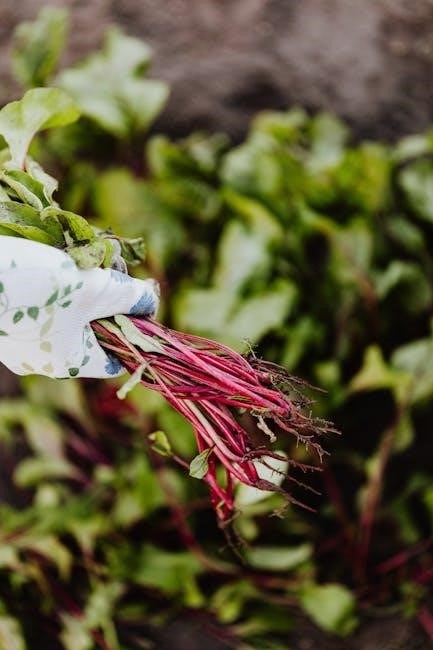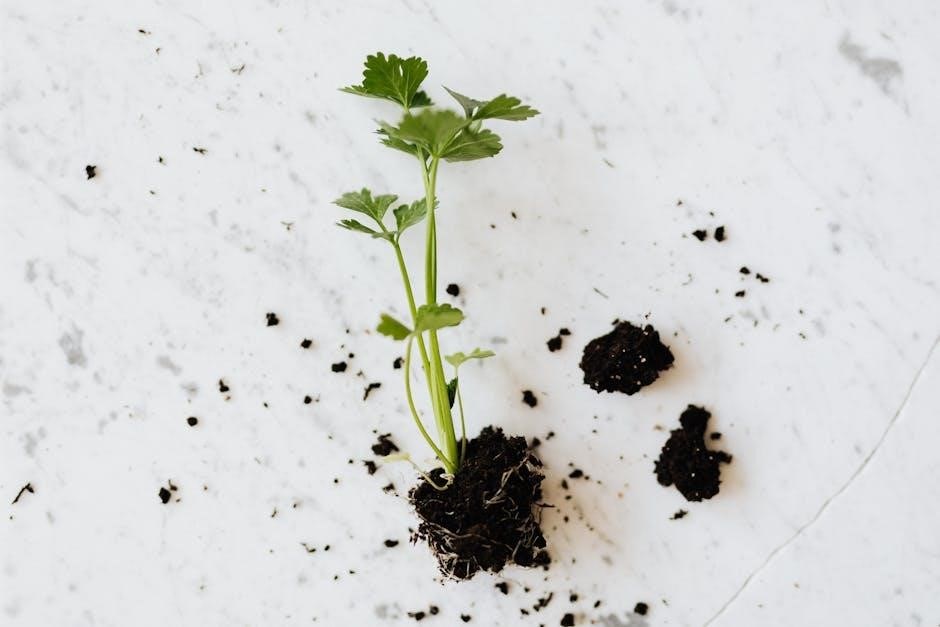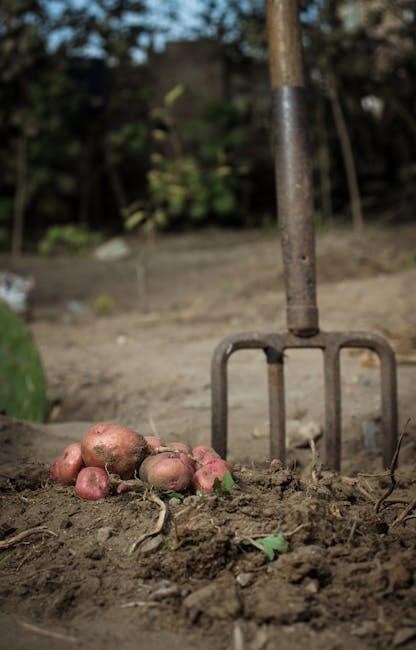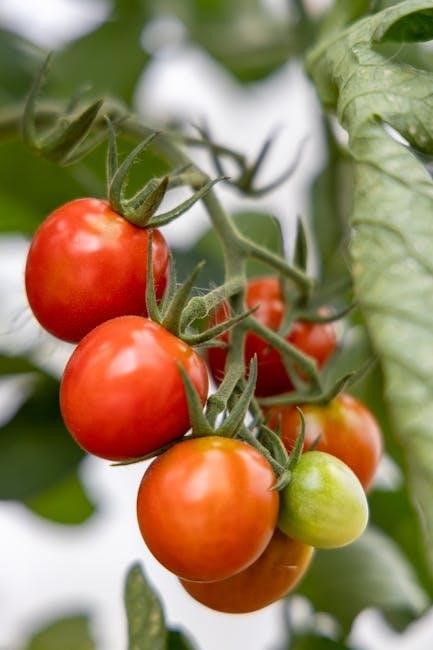Zone 10a offers a unique gardening opportunity with its warm climate. A well-structured vegetable planting schedule is essential for maximizing yields and enjoying a diverse harvest year-round in this region.
By following a tailored Zone 10a planting guide, gardeners can optimize growing conditions, ensuring crops thrive in the region’s mild winters and hot summers. This guide provides a clear roadmap for success.
Overview of USDA Hardiness Zone 10a
USDA Hardiness Zone 10a is characterized by mild winters and warm temperatures, with average minimum temperatures ranging from 30°F to 35°F. This zone includes parts of California, Hawaii, and southern states like Texas, Louisiana, and Florida. Zone 10a is ideal for year-round gardening due to its long growing season, with the last frost date typically in late January and the first frost date as late as late November or early December. Gardeners in this zone can grow a wide variety of vegetables, herbs, and fruits, making it a highly productive region for home gardens.
Importance of a Planting Schedule for Zone 10a
A planting schedule is crucial for Zone 10a gardeners due to its long growing season. It helps optimize crop performance by aligning planting times with ideal weather conditions, ensuring vegetables thrive in both cooler and warmer months. The schedule guides gardeners to plant cool-season crops like broccoli and kale during the milder periods and heat-tolerant crops like tomatoes and peppers in warmer times. It also aids in managing pests and diseases by suggesting planting times when these issues are less prevalent. Additionally, it helps in planning garden layout, crop rotation, and succession planting, which are essential for soil health and pest management. By following a schedule, gardeners can improve germination rates by planting seeds at the right soil temperatures, manage water resources efficiently, and ensure a steady harvest. It also serves as a record-keeping tool for tracking planting activities and performance, aiding in future gardening decisions. Overall, a planting schedule is vital for maximizing yields and maintaining a productive garden in Zone 10a’s unique climate.

Understanding the Climate of Zone 10a
Zone 10a features mild winters, with average temperatures between 30–35°F. The first frost is mid-December, and the last is late January. This climate allows year-round gardening with careful planning.
Temperature Ranges and Frost Dates
Zone 10a experiences mild winters, with average minimum temperatures between 30–35°F. The first frost typically occurs around mid-December, while the last frost is by late January. These mild frost dates create a long growing season, allowing gardeners to plant year-round. Soil temperature is crucial, with optimal germination occurring when temperatures reach at least 50°F. Understanding these temperature ranges and frost patterns is key to timing plantings correctly and maximizing crop success in Zone 10a’s warm climate.
Planting Windows for Vegetables in Zone 10a
Zone 10a’s warm climate allows for multiple planting windows throughout the year. Early spring (February-March) and late summer/early fall (August-September) are ideal for starting cool-season crops like broccoli and spinach. Heat-tolerant vegetables such as tomatoes and peppers thrive in the warm months, while root vegetables like carrots and beets can be planted in late winter to early spring. Gardeners should also consider starting seeds indoors during winter and transplanting them in early spring for optimal growth. This region’s mild winters and long growing season provide year-round opportunities for vegetable cultivation.

Zone 10a Vegetable Planting Calendar
A Zone 10a planting calendar provides a structured guide for gardeners, outlining optimal planting times for vegetables across 12 months. This resource ensures year-round harvest success in the region’s warm climate.
Month-by-Month Planting Guide
Zone 10a’s warm climate allows for year-round gardening. January and February are ideal for cool-season crops like spinach, kale, and broccoli. March and April shift focus to root vegetables and herbs, while May and June transition to heat-tolerant crops like tomatoes and peppers. Summer months (July-August) are perfect for tropical vegetables such as chayote and okra. In September and October, plant fall crops like squash and eggplant. November and December round out the year with Brussels sprouts and carrots. This guide ensures a diverse and thriving garden every month.
Spring, Summer, Fall, and Winter Planting Times
Zone 10a’s mild winters and long growing season allow for year-round planting. Spring (March-May) is ideal for tomatoes, peppers, and cucumbers. Summer (June-August) suits heat-tolerant crops like okra and eggplant. Fall (September-November) is perfect for broccoli, carrots, and squash. Winter (December-February) supports cool-season crops such as spinach, kale, and Brussels sprouts. With minimal frost concern, gardeners can adapt planting schedules to maximize yield. Soil temperature plays a key role in germination success.

Best Vegetables for Zone 10a
Zone 10a’s warm climate supports a wide variety of vegetables. Tomatoes, peppers, eggplants, and leafy greens thrive year-round. Heat-tolerant crops like okra and cucumbers also excel in this region.
Vegetables That Thrive in Warm Climates
Zone 10a’s warm climate is ideal for growing a variety of vegetables that love heat. Tomatoes, peppers, and eggplants are popular choices, thriving in the region’s long growing season. Okra, cucumbers, and squash also excel in these conditions. Leafy greens like spinach and kale can be grown during cooler months, while herbs such as basil and mint flourish year-round. Root vegetables like carrots and radishes grow well in the mild winters. With proper planning, gardeners can enjoy a diverse and bountiful harvest in Zone 10a’s favorable climate.
Heat-Tolerant and Cool-Season Crops for Zone 10a
Zone 10a’s climate supports a wide range of vegetables. Heat-tolerant crops like tomatoes, peppers, and eggplants thrive in the warm summers, while cool-season crops such as broccoli, spinach, and carrots excel in the mild winters. Leafy greens like kale and Swiss chard can grow year-round, and herbs like basil and cilantro prefer the cooler months. Root vegetables like beets and radishes also perform well in the region’s temperate winters. Planting both heat-tolerant and cool-season crops allows gardeners to maximize their harvests and enjoy fresh produce throughout the year.
Year-Round Gardening Tips for Zone 10a
Zone 10a’s mild winters and hot summers make it ideal for year-round gardening. Use succession planting to maximize yields, and prioritize soil health with compost and mulch regularly.
Succession Planting and Crop Rotation
Succession planting is key in Zone 10a’s long growing season, allowing multiple harvests from the same bed. Plant cool-season crops like kale and carrots in winter, then transition to heat-tolerant varieties like tomatoes and peppers in spring. Rotate crops to maintain soil health and prevent pests. Alternate plant families to avoid depleting specific nutrients. Incorporate cover crops between cycles to enrich the soil. This strategy ensures continuous productivity and reduces the risk of disease buildup, making it essential for year-round gardening success in Zone 10a.
Managing Soil Health in Zone 10a
Maintaining healthy soil is crucial for thriving gardens in Zone 10a. Test your soil pH regularly and amend with compost or organic matter to create a balanced foundation. Incorporate cover crops like legumes to enrich nitrogen levels and improve soil structure. Mulch heavily to retain moisture and regulate soil temperature, reducing the need for frequent watering. Rotate crops to avoid depleting specific nutrients and prevent pest buildup. Regularly add organic amendments to sustain fertility and support robust plant growth throughout the year.
Zone 10a Vegetable Planting Schedule PDF Guide
The Zone 10a Vegetable Planting Schedule PDF provides a detailed, downloadable guide for optimal planting times, including frost dates, soil temperature requirements, and space for personalized notes.
Downloading and Using the Planting Schedule
Downloading the Zone 10a Vegetable Planting Schedule PDF is a convenient way to access a detailed, month-by-month guide tailored for the warm climate of Zone 10a. This comprehensive resource includes optimal planting times, frost dates, and space for personal notes. Gardeners can easily reference the schedule to plan and track their planting activities throughout the year. The PDF format allows for easy printing or digital access, making it a practical tool for home gardeners. By following the guide, growers can ensure they’re planting at the right time for their specific climate, maximizing yields and enjoying a bountiful harvest.
Key Features of the PDF Guide
The Zone 10a Vegetable Planting Schedule PDF offers a wealth of essential features for gardeners. It includes a month-by-month planting calendar, detailed temperature ranges, and frost date information specific to Zone 10a. The guide also provides lists of vegetables that thrive in the region’s climate, along with tips for optimal growth. Additional features include space for personalized notes and a comprehensive overview of heat-tolerant and cool-season crops. This organized format ensures gardeners can plan and execute their planting strategies effectively, making it an indispensable resource for successful year-round gardening in Zone 10a.

Common Mistakes to Avoid in Zone 10a
Avoid common mistakes like planting too early or late, ignoring soil temperature for germination, and not adapting to Zone 10a’s unique climate conditions for optimal vegetable growth.
Planting Too Early or Too Late
Planting too early or late is a common mistake in Zone 10a. Cool-season crops planted too late may bolt in heat, while warm-season crops planted too early risk frost damage. Ensure vegetables like broccoli, spinach, and tomatoes align with the region’s mild winters and hot summers. The last frost date is January 30, and the first frost date is November 30, so timing is critical. Planting outside these windows can lead to poor germination or incomplete growth. Always check seed packets for days to harvest and plan accordingly to avoid losing your crop. Use the planting schedule to synchronize with Zone 10a’s climate for a successful harvest.
Not Considering Soil Temperature for Germination
Soil temperature plays a crucial role in germination for Zone 10a gardens. Planting seeds when the soil is too cool or too warm can lead to poor germination or slow growth. For example, warm-season crops like tomatoes and peppers require soil temperatures above 60°F, while cool-season crops like broccoli and spinach thrive in cooler soils. Always use a soil thermometer to check temperatures before planting. Waiting for optimal conditions ensures proper germination and a strong start for your vegetables. Neglecting this step can result in reduced yields or failed crops.